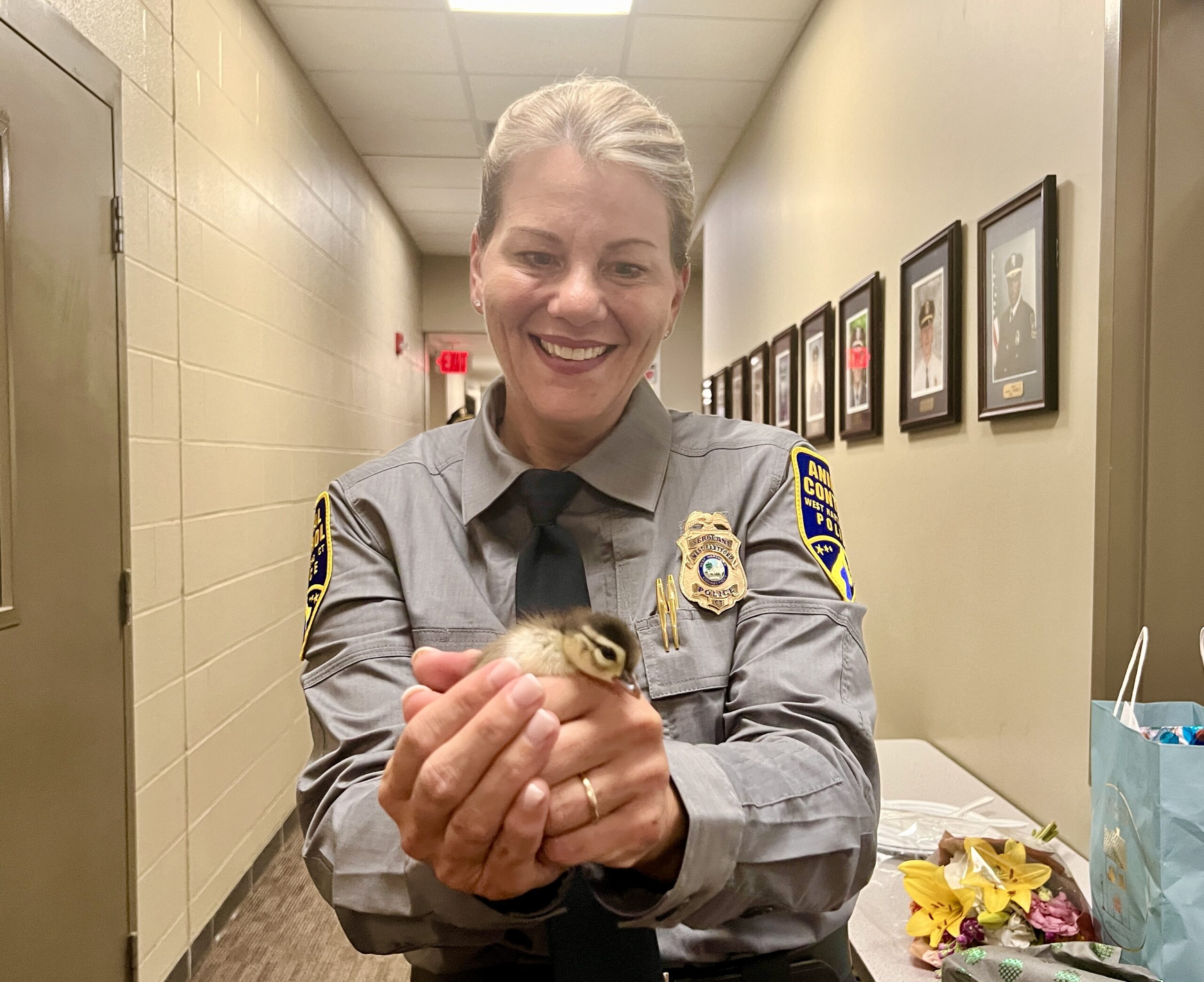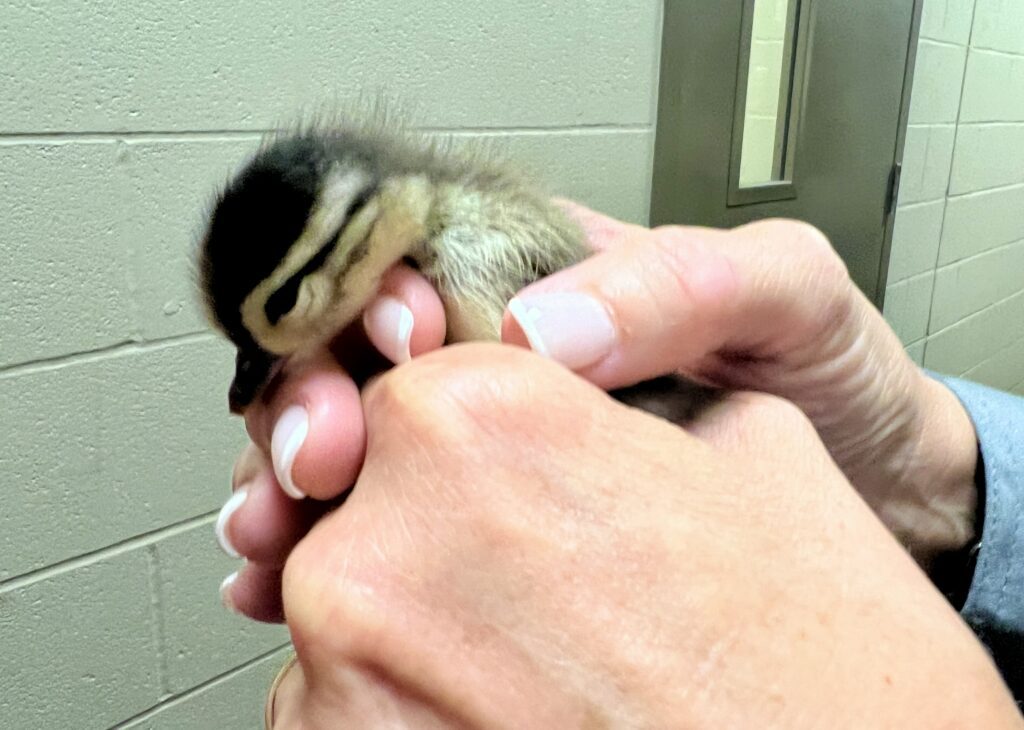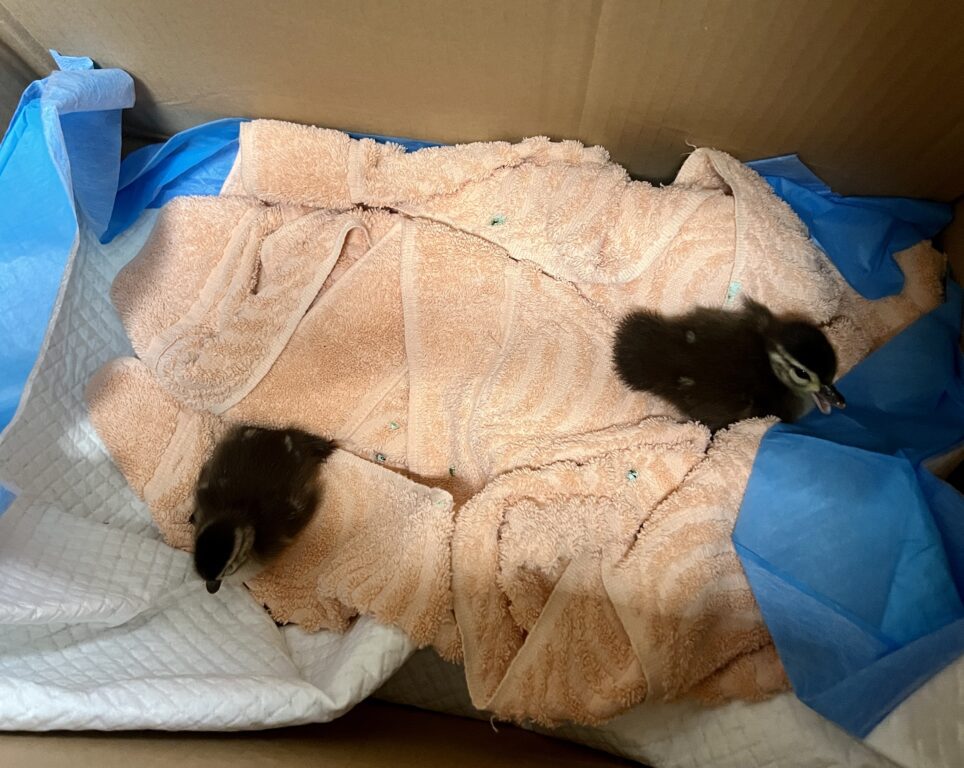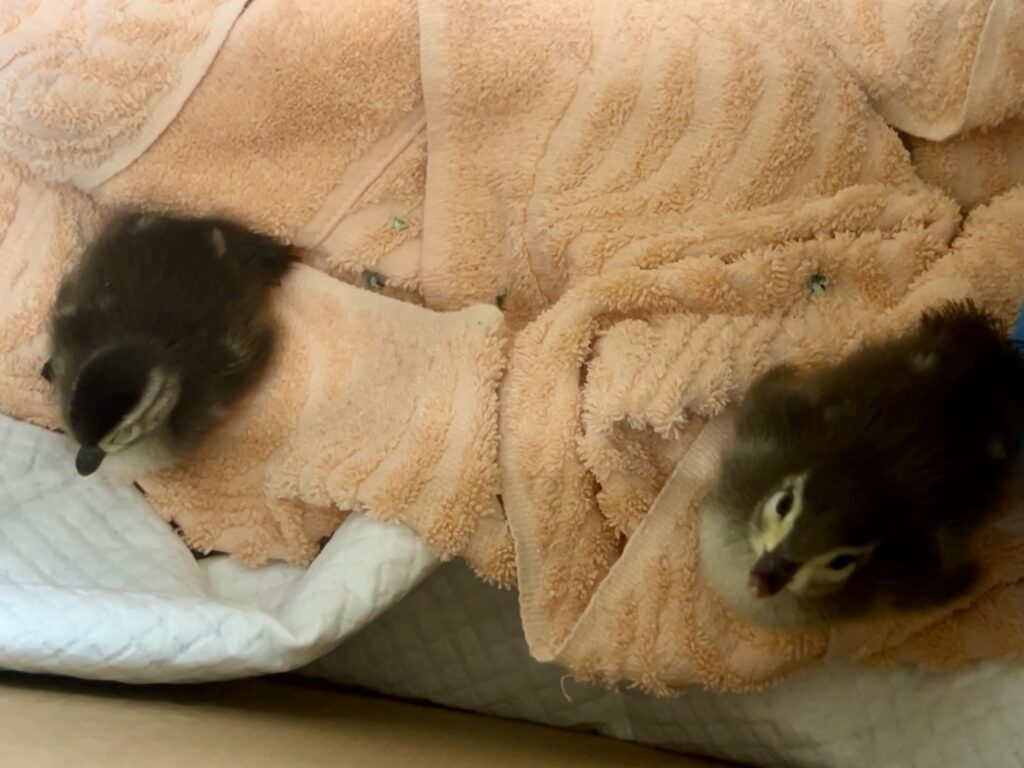West Hartford Animal Control Officer Rescues Ducklings from Store Basement

Audio By Carbonatix

Animal Control Officer Kimberly Gulino holds one of the baby wood ducks she rescued Tuesday morning. Photo credit: Ronni Newton
West Hartford Animal Control Officer Kimberly Gulino rescued two wood duck chicks from the basement of Goldberg’s Bagels.

Animal Control Officer Kimberly Gulino holds one of the baby wood ducks she rescued Tuesday morning. Photo credit: Ronni Newton
By Ronni Newton
West Hartford Animal Control Officer Kimberly Gulino has been promoted to supervisor of the Animal Control Division, but as she arrived at the Police Department’s headquarters on Tuesday afternoon to participate in the official promotion ceremony, she was a bit distracted by an important rescue mission that was underway, involving the two wood duck chicks she was carrying in a large cardboard box covered with a towel.
Animal Control gets a wide variety of calls from the community, most involving domestic animals or wildlife causing problems or getting themselves into unusual situations or places. Tuesday morning’s call was a first for Gulino.
Two tiny wood ducks, squeaking and squealing, were discovered that morning in the basement of Goldberg’s Bagels on New Britain Avenue in Elmwood. The mother duck was nowhere to be found.
After trapping the ducklings and removing them from the bagel store – before they had a chance to sample the morning specials – Gulino reached out to a wildlife rehabilitator. She was actually told not to feed them, or even give them water because they could drown.
Wood ducks nest in tree cavities, and even very young ducklings know how to jump toward the light to leave the nest and can jump two feet into the air. “They call it popcorning,” Gulino said she learned, and while she initially had placed the ducks in a hard-sided dog carrier the rehabilitator told her to relocate them before they injured themselves. She placed them in a cardboard box, covered by a towel, so they could neither escape nor get hurt.

Wood ducks rescued by ACO Kimberly Gulino. Photo credit: Ronni Newton
She was waiting for the ducklings to be picked up by the rehabilitator on Tuesday afternoon, and brought them with her to the police station where the officer at the front desk watched them during the promotional ceremony.
Once an endangered species, according to the Department of Energy and Environmental Protection wood ducks – one of the most beautiful types of ducks – have made a comeback thanks to protection from the 1918 Migratory Bird Treaty Act and wildlife management efforts.
In Connecticut, they are typically seen in the northwest and northeast corners, and “inhabit freshwater wooded swamps, marshes, ponds, rivers, and streams,” according to DEEP. “Important nesting areas include forested swamps (red maple and standing dead timber), shrub swamps, and emergent marshes. Ponds and lakes with shoreline cover (over-hanging shrubs and trees) are also readily used by wood ducks. Waters with woody debris (logs, stumps, standing trees) and green vegetation provide the best habitat for wood ducks. Adults use the woody debris for loafing and the vegetation provides both cover and food resources. Invertebrates, which provide an important source of protein for the hen and ducklings, are typically higher in waters with woody debris and emergent vegetation.”
Gulino doesn’t know where the wood ducks came from, and said Beachland Park seemed was perhaps only likely nearby habitat – but that would have meant they crossed New Britain Avenue to get to Goldberg’s. She said while researching the species, she learned wood ducks can actually walk up to a mile within days of hatching.

Wood ducks rescued by ACO Kimberly Gulino. Photo credit: Ronni Newton
Like what you see here? Click here to subscribe to We-Ha’s newsletter so you’ll always be in the know about what’s happening in West Hartford! Click the blue button below to become a supporter of We-Ha.com and our efforts to continue producing quality journalism.



